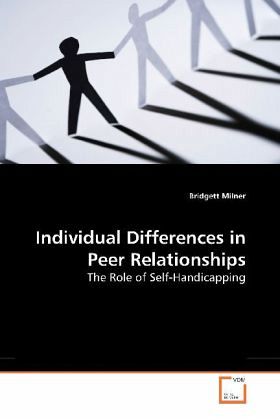
Individual Differences in Peer Relationships
The Role of Self-Handicapping
Versandkostenfrei!
Versandfertig in 6-10 Tagen
49,00 €
inkl. MwSt.

PAYBACK Punkte
0 °P sammeln!
This book summarizes a series of research projects investigating the effects of self-handicapping on an individual''s daily life by looking at participants'' peer relationship and social interactions, reactions of peers to self-handicapping behaviors, and self-presentation strategies. Self-handicapping, when disclosed to peers, was predicted by previous research to negatively affect social networks. The series of studies presented in this book illustrates that the effect of self-handicapping on peer relationships is not nearly as straightforward as previous research might suggest and not unive...
This book summarizes a series of research projects investigating the effects of self-handicapping on an individual''s daily life by looking at participants'' peer relationship and social interactions, reactions of peers to self-handicapping behaviors, and self-presentation strategies. Self-handicapping, when disclosed to peers, was predicted by previous research to negatively affect social networks. The series of studies presented in this book illustrates that the effect of self-handicapping on peer relationships is not nearly as straightforward as previous research might suggest and not universally negative. Self-handicappers were found, in comparison to low self-handicappers to have more friends with whom less close relationships were maintained. Self-handicappers were also found to spend, compared with low self-handicappers, a greater amount of time engaged in social activities with others(particularly with males). Finally, self-handicapping as a behavior was displayed very differently depending upon the presence and gender of others and this change in display impacted the perception others formed regarding the behavior.












